What Is the Difference Between a Teapot and a Coffee Pot?
Most of us love a good cup of coffee or tea, and whichever way you like it, it would help to know how either is served. I know!
It mightn’t concern you as much, but learning is never-ending. So, what is the difference between a teapot and a coffee pot?
The primary difference between a teapot and a coffee pot lies in shape, though there are other distinguishing factors.
A coffee pot is tall with a slender design, while a teapot takes a globular shape. We base this description on traditional teapots, as modernity has come with a plethora of designs for fancy, style, and aesthetics.
The History of Teapots
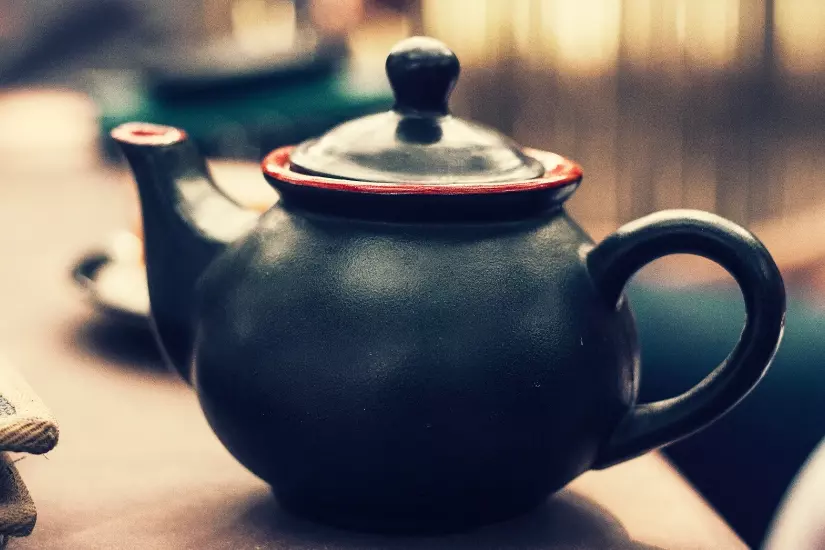
The teabag bandwagon might know nothing about teapots – it is time for a history class! Experts record that the teapot has existed since 1500AD.
China was the first place with traces of the Yixing teapots made from red and purple clay found in Jiangsu’s eastern province.
These were a hit then because of their heat-resistant nature, and do you know the funniest part? You were to drink tea straight from the spout.
Yixing teapots’ popularity spread to Japan and birthed the Banko Ware, which almost resembled the Chinese original teapot.
There was a slight refinement in shape and more usage of the pot’s overhead handle to carry it. Slowly the teapot culture spread to Tibet, Europe, then America before other parts of the world experienced its magic.
The History of Coffee Pots
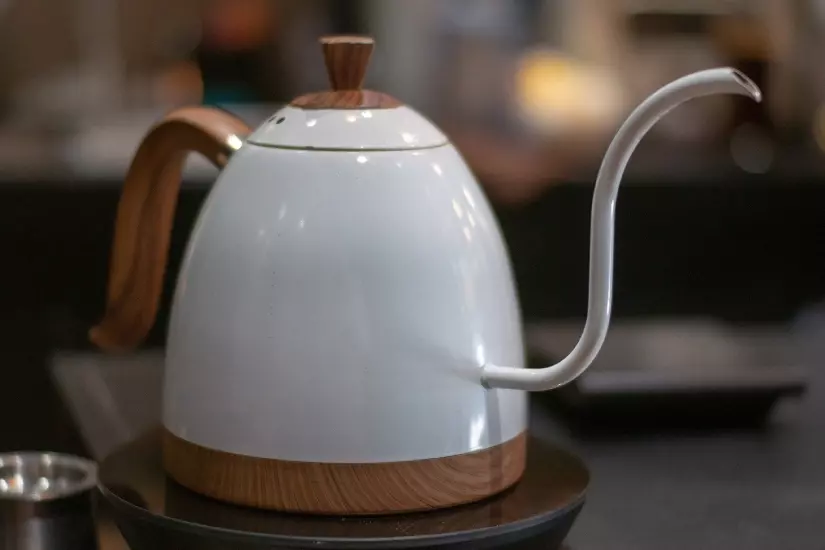
Coffee consumption dates back to the 1700s. There isn’t much online on the traces of coffee pots until 1672, when silver coffee pots were first used in Paris.
The rise in the demand for coffee drinks at the start of the 18th century led to the mass production of coffee pots.
Ancient coffee pots almost resembled chocolate pots, only that you could remove the finial on the latter to insert a rod and stir.
Manufacturers designed tapered, pear, and cylindrical forms with elegant flat-chased ornaments. The spout was lower on the body, and most had a classic, thin, right-angled handle.
Octagon designs blew up in 1710, while the pear ones became popular in 1740. So many designs and variations have been manufactured to date.
However, these might be outdated and go into the antique category because of the rise in coffee makers.
Key Differences Between a Coffee Pot and a Teapot
Tea and coffee are the most typical beverages worldwide, even though we see different variations of each cropping up speedily.
Their versatility is exciting, and you can serve tea or coffee hot or cold to enjoy in various ways. The brewing vessels are the first difference you notice if you are a keen and knowledgeable buddy.
You won’t need to pour a cup or ask the server what is what. That is why this article is vital for your crockery knowledge base.
Each pot boasts a unique design, features, and shape to make it perfect for brewing or serving its specific drink.
Here are our in-depth findings on the differences between a coffee pot and a teapot.
Design and Appearance
Teapots and coffee pots have distinct designs. Most traditional teapots are smaller, globular/rounder to enhance the tea brewing process.
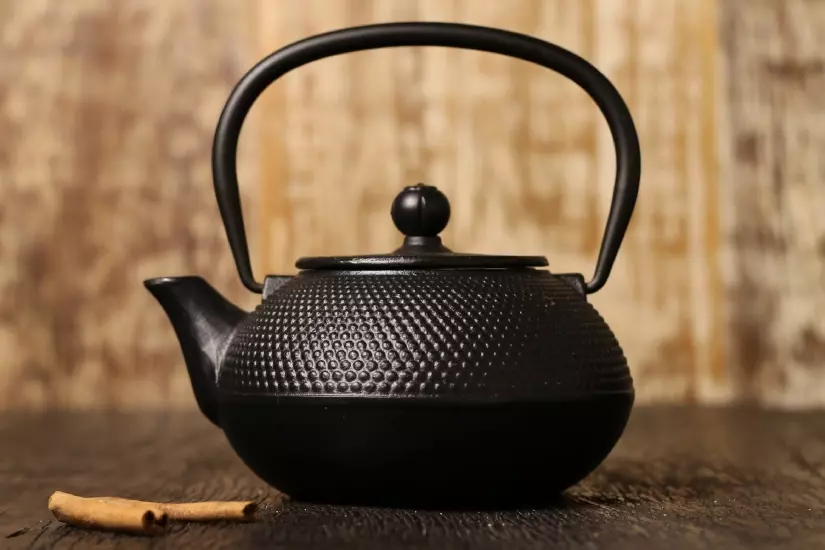
As tea boils, it moves around and should do it freely to allow complete brewing and to get a richer taste.
Coffee pots are sleeker and more elegant. Craftsmen build them to be slimmer but taller to enhance the coffee’s potency and richness.
The tallness of coffee pots aids in the flavorful and even nature of the drink.
Coffee gourd roots sink and settle at the bottom of a coffee pot. Immersing them in water leads to an enhanced flavor and a richer color.
Fun Fact: Did you know that the material of the teapot can change the tea’s taste?
Here’s a reminder to be keen if you are a witty brewer, but I’ll spill the secret a little and leave the rest in your court.
For instance, silver teapots alter the taste of your tea. Use clay teapots if you want to retain the tea’s original taste.
Coffee and tea have sharp and distinct flavors – this influences the pot you will use for brewing and serving. If you pour liquid under the tea leaves, you can easily release it from under.
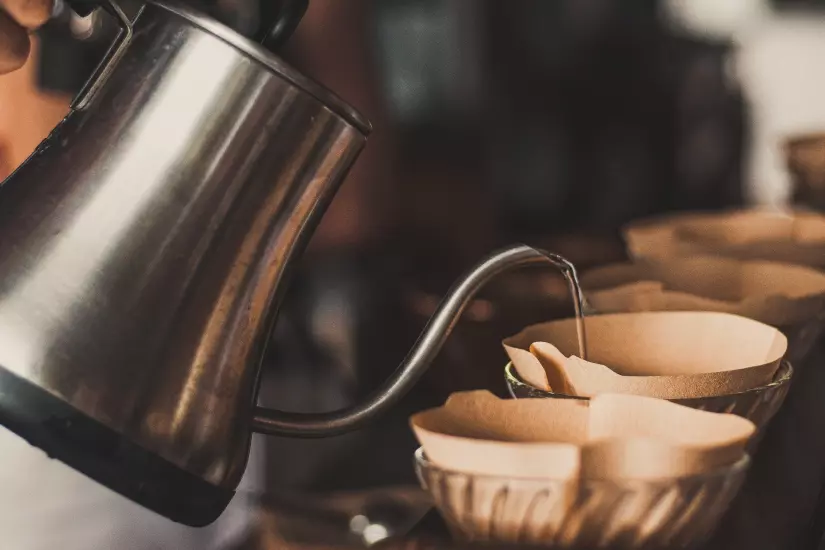
Simply float and hook the teapot’s spout closer to the bottom.
So why does tea taste better from a teapot?
The secret is in the order in which you add milk to your cup. Fat in the milk emulsifies in a specific manner before you pour it into a cup to give a creamier flavorful profile.
The Spout
Itsy bitsy spider crawled up the water spout was a fun nursery rhyme.
But we have more about the spout that you should have in mind when differentiating the two. The spout is the pourer on a coffee or teapot.
The spout in a teapot is almost at the center of the pot and is shorter. Craftsmen design it this way to make it easy and quick to clean since tea leaves tend to clog up spouts.
Coffee pots have longer spouts hooked closer to the pot’s bottom to prevent the beverage from spilling in case the pot is tilted.
The length also ensures you pour out the coffee slowly and meticulously.
The Brewing Mechanism
Novices might see no primary difference between a teapot and a coffee pot, but tea connoisseurs will school you on what you need to know about the two.
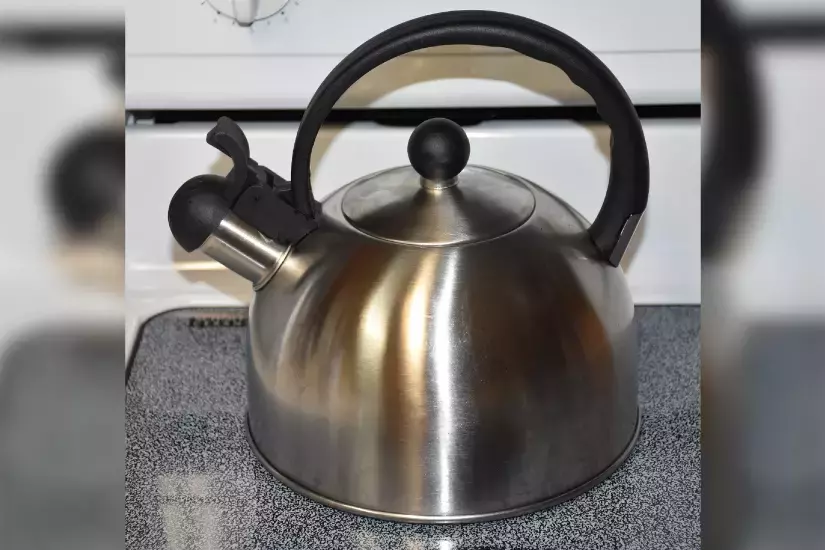
The teapot’s mechanism needs its structure to be shorter and stouter to give tea leaves enough space to float and move around during brewing.
The slim yet tall nature of a coffee pot is to ensure coffee grounds sit in the water longer for a stronger flavor.
Additionally, coffee remains warmer in the pot longer, as the brew is known to cool down faster.
Usage
We can’t stop insisting on the fact that a teapot is meant to serve tea while a coffee pot remains for coffee.
Interchanging the two makes you look unschooled, and we are not here for it. Tea leaves will float in the teapot, and the spout’s position allows it to brew and flow out of the pot from underneath them.
Quality coffee grounds sink, hence the spout’s position on coffee pots (which is near the pot’s top). The position allows coffee to pour out above the grounds.
The structure of the coffee pot reduces the liquid’s movement and ensures the grounds settle at the bottom of the pot.
The Handle
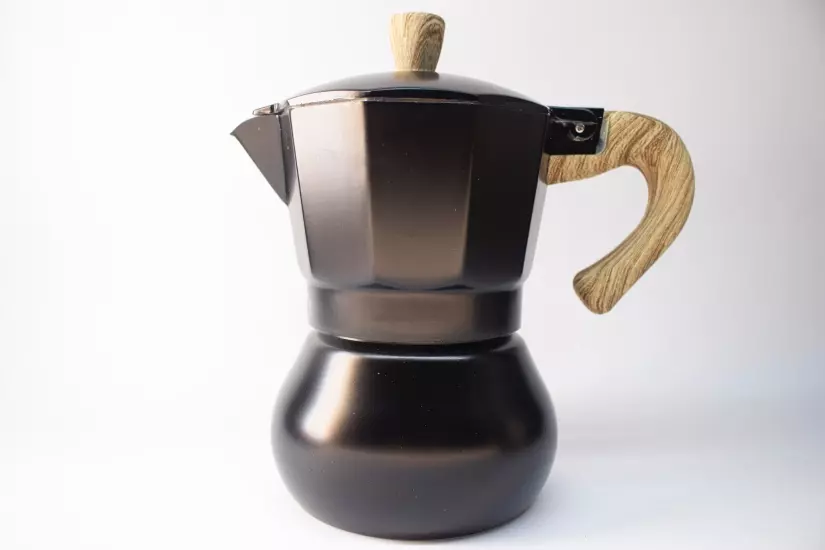
Unless you are very keen, you might not notice this. Handles on most teapots start and end on the rounded section of the pots.
But, there are a few designs with slightly different positioning.
Handles on coffee pots start closer to the lid and extend almost to the bottom of the pots.
The longer handles are primarily for balancing coffee pits when pouring from them, thanks to their tall nature. Such handles can be compared to straps on handbags.
Material
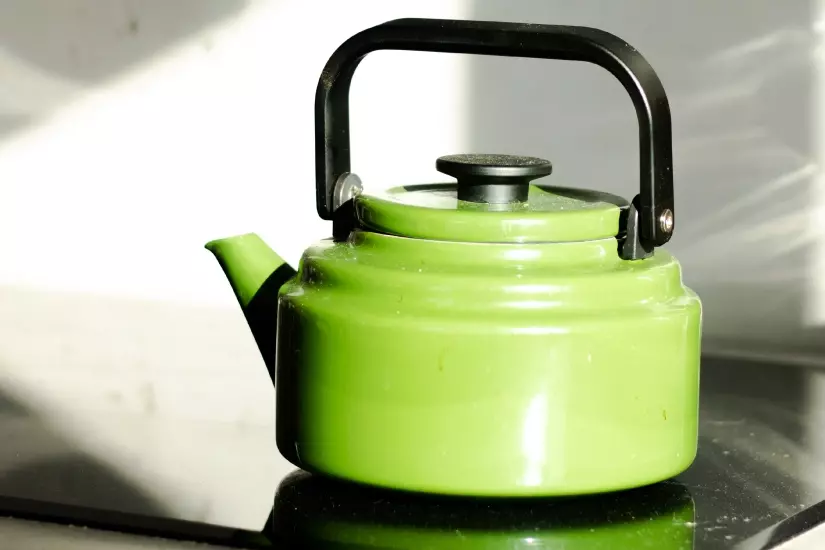
Tea and coffee pots are differentiated depending on the construction material and origin.
Material options for teapots range from glass, copper, silver, porcelain, and cast iron to stainless steel, ceramic, and stoneware.
Coffee pots can be from ceramic, matte silver, tempered glass, stainless steel, or aluminum.
The material you choose for your coffee or tea pot will depend on your needs and preference.
Overall, ceramic is the most typical material used to make both pots. It enhances the tea or coffee brewing process.
Also, it offers the user a sense of belonging or tradition during use. You will love how microwave-friendly and sustainable the material is.
If you are a drinker who enjoys one tea or coffee type daily, ceramic is the ideal choice.
Choose a pot shape that suits your design, aesthetics, and storage space. We would love you to exclusively enhance your tea or coffee ritual each time you take a sip.
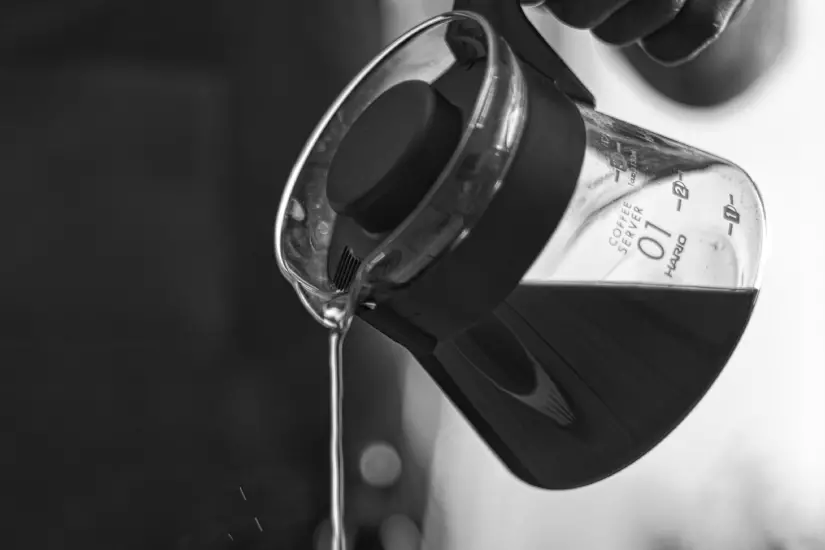
Material can influence the color of your tea or coffee pot. Some metallic options retain their color or can be painted for aesthetics and style. Ceramics and porcelain are versatile.
Wrap Up
The difference between a teapot and a coffee pot at a glance is the design or structure.
Coffee pots are built to be sleeker, slim, and tall to enhance the richness of the brew and keep it warm for a long.
Teapots, on the other hand, are short and rounder for proper brewing of the beverage.
Other aspects like the spout, handle, and brewing mechanism are distinguishing factors that help identify a coffee pot from a teapot.
Different types of teapots and coffee pots exist depending on the design, material, size, and aesthetics.
Consider crucial factors like the number of cups you want to brew, the type of coffee or tea, and your storage space before buying any.
Aspects like style and aesthetics are personal, but you won’t lack a teapot or coffee pots that suit your needs.

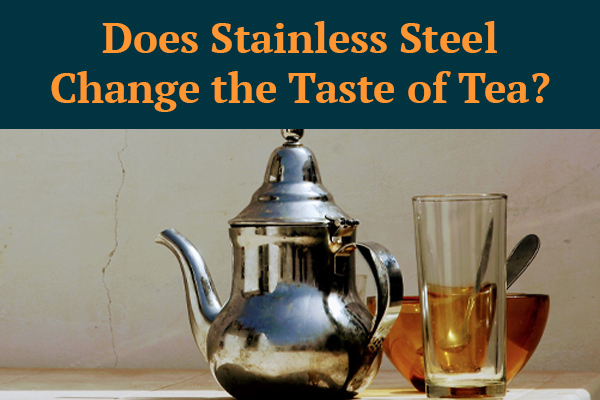

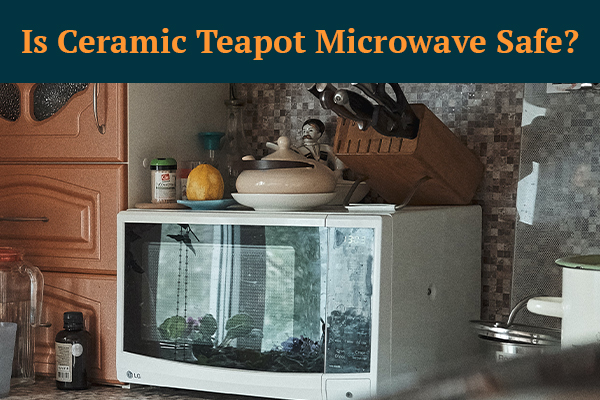
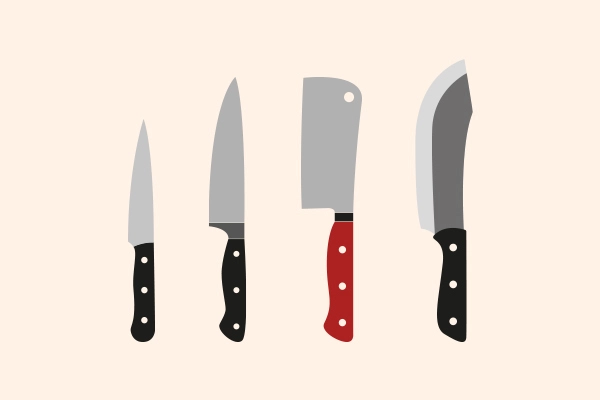

![Can a Bread Knife Cut Meat? [Know How You Can]](https://www.primekitchener.com/wp-content/uploads/2023/01/can_a_bread_knife_cut_meat.jpg)